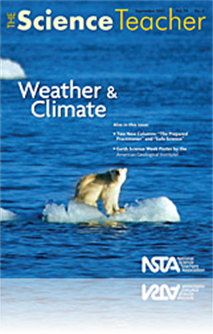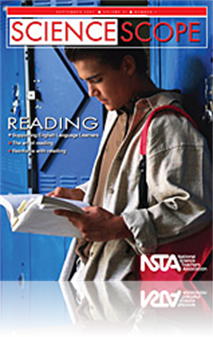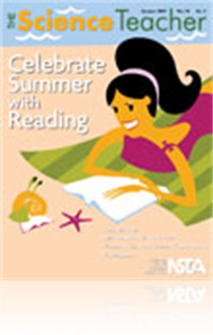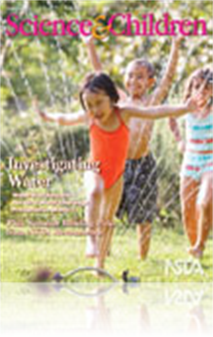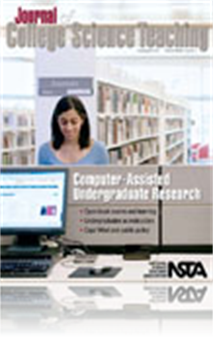All Resources
Journal Article
The projection screen in the dimly lit auditorium was ready and an online chat window was open on the computer screen. Computer experts and entomologists were ready on the other end. One by one, students filled up the rows of seats eagerly anticipati...
Journal Article
What invertebrates make the best classroom pets? How should we care for each invertebrate? What type of inquiry activities could invertebrates support? How do elementary students respond to invertebrates? These were the questions investigated in The ...
Journal Article
The Early Years: Animal Adventures
Children can have a new favorite animal every week or even every hour. The more familiar the children become with an animal, the more they will be able to understand how its body form and behavior allow it to survive. Learning about the characteristi...
Journal Article
President’s Message: Meeting the Needs of the New World Student
To succeed in the 21st century, students have to learn how to be creative problem solvers who can work in collaborative groups. These new-world students must have the ability to think critically, use technology efficiently, and communicate effectivel...
Journal Article
Science Sampler: Using direct instruction to teach content vocabulary
The magnitude of vocabulary students need to know in the middle school science curriculum is vast and can be daunting. As educators, it is our job to efficiently and effectively teach students so that they are not only able to apply the new vocabular...
Journal Article
Scope on the Skies: Between the planets
This year, Scope on the Skies will highlight members of our solar system, featuring current information about these objects and exploration missions to them. We will begin with an area of the solar system that could serve as a dividing line between t...
Journal Article
Science Sampler: Using trade books to improve science education
For students to be successful in science, they must be able to examine information, make predictions, and comprehend what they are reading (Miller 2006). By incorporating trade books, (such as fictional story books, informational story books, and inf...
Journal Article
Science 101: How do animals navigate during migration?
Migrating animals do amazing things. Homing pigeons can find their way “home” across hundreds of miles; salmon return to their spawning location thousands of miles away; turtles travel over eight thousand miles to lay their eggs in the spot where...
NSTA Press Book
The Story of Science: Einstein Adds a New Dimension
Now, it’s time for your students to look over Albert Einstein’s shoulder as he develops a new kind of physics that points the way to more recent theories of particle physics and quantum mechanics. Joy Hakim will demonstrate how scientific thought...
By Joy Hakim
Book Chapter
A Boy with Something on His Mind
Fifteen-year-old Albert Einstein is miserable. He is trying to finish high school in Germany, but he hates the school; it’s a strict, rigid place. To make things worse, his parents have moved to Italy. They think he should stay behind until his sch...
Journal Article
Idea Bank: Literature Circle Roles for Science Vocabulary
The study of science is often vocabulary intensive. An analysis of high school chemistry, biology, physics, and Earth science textbooks showed that approximately 1,000 to 3,000 novel science terms are contained in each (Groves 1995). Given the shear ...
Journal Article
Editor's Note: Investigating Water (Summer 2007)
Water is a major world currency and continues to be critical for all. We can figure out how to live without oil but it is quite a cumbersome task to consider living without water. In this month’s installment of the Editor’s Note section we rece...
Journal Article
Can Inexperienced Researchers Teach Open-Ended Laboratories?
Using exit surveys of biology students we examine whether undergraduate instructors can teach investigative labs, and share perspectives on the challenges of working with undergraduate lab instructors....
Journal Article
Solstice, Science, and Summer Reading
Like generations before them, teachers often use the energy of the summer Sun to nurture seeds of growth (both real and virtual) for another year. Whether you believe the ancient legends or not, summer provides catch-up time. You can turn off your ...




